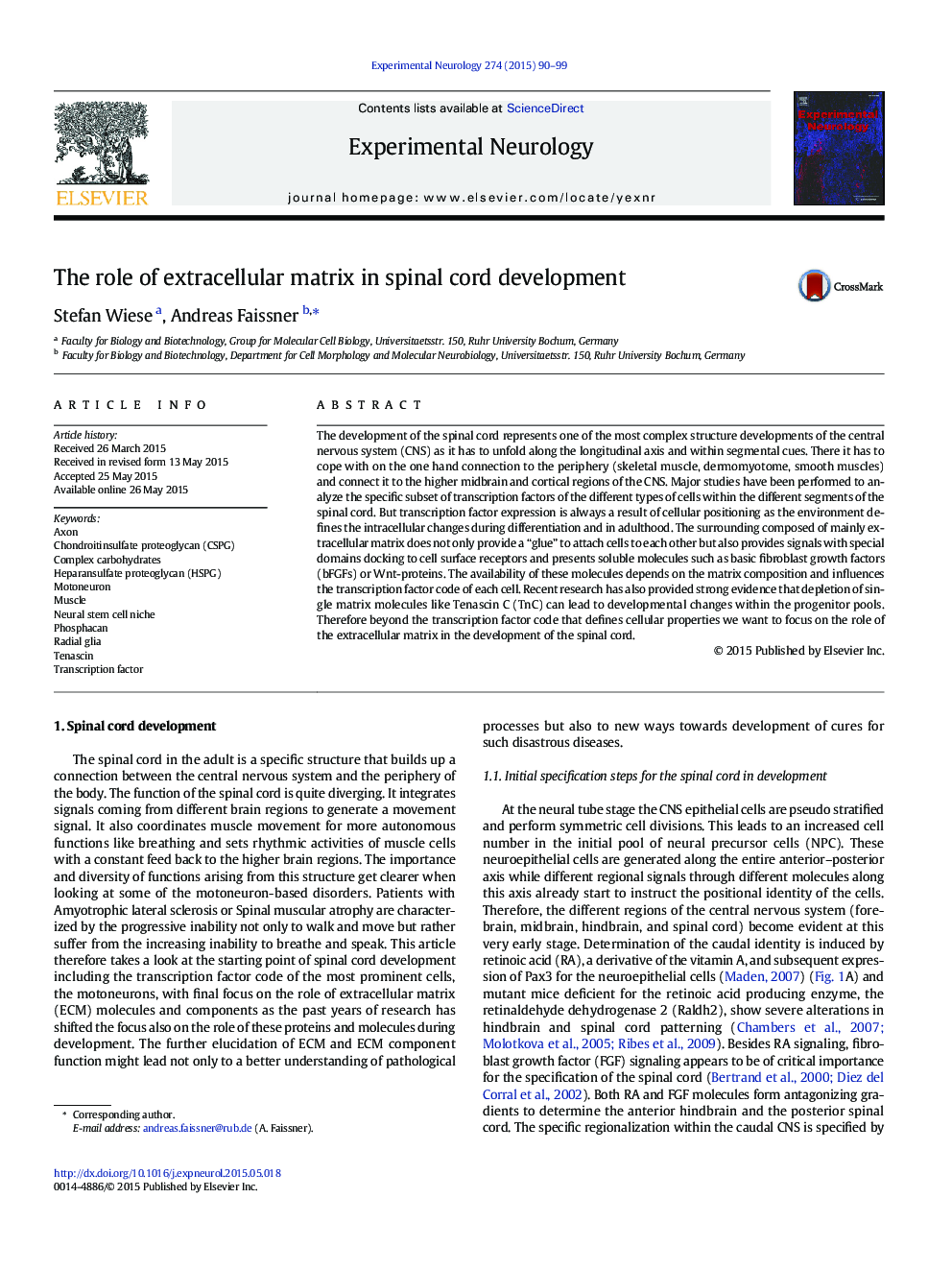| Article ID | Journal | Published Year | Pages | File Type |
|---|---|---|---|---|
| 3055335 | Experimental Neurology | 2015 | 10 Pages |
The development of the spinal cord represents one of the most complex structure developments of the central nervous system (CNS) as it has to unfold along the longitudinal axis and within segmental cues. There it has to cope with on the one hand connection to the periphery (skeletal muscle, dermomyotome, smooth muscles) and connect it to the higher midbrain and cortical regions of the CNS. Major studies have been performed to analyze the specific subset of transcription factors of the different types of cells within the different segments of the spinal cord. But transcription factor expression is always a result of cellular positioning as the environment defines the intracellular changes during differentiation and in adulthood. The surrounding composed of mainly extracellular matrix does not only provide a “glue” to attach cells to each other but also provides signals with special domains docking to cell surface receptors and presents soluble molecules such as basic fibroblast growth factors (bFGFs) or Wnt-proteins. The availability of these molecules depends on the matrix composition and influences the transcription factor code of each cell. Recent research has also provided strong evidence that depletion of single matrix molecules like Tenascin C (TnC) can lead to developmental changes within the progenitor pools. Therefore beyond the transcription factor code that defines cellular properties we want to focus on the role of the extracellular matrix in the development of the spinal cord.
